The Difference Between Sadness and Clinical Depression
Introduction
Everyone feels sad sometimes. Maybe you’ve had a bad day, lost something important, or faced a disappointment that still stings. Sadness is a normal and even healthy emotion — it’s the body’s way of processing pain and seeking healing.
But sometimes, that sadness doesn’t pass. It lingers, grows heavier, and begins to affect how you think, sleep, eat, and function. When low mood stops being a temporary feeling and becomes a state of existence, it may have crossed the line into clinical depression.
This article explores the crucial difference between sadness and depression — how to tell them apart, what happens in the brain and body during each, and what steps you can take to find relief and support. 💙
Looking for supplements for This? Click here.
🌧️ Sadness: A Normal, Temporary Emotion
Sadness is one of the most basic human emotions. It’s part of our emotional survival system — helping us process loss, empathize with others, and reflect on what matters.
💡 What Sadness Really Is
Sadness is an emotional response to a specific trigger: rejection, disappointment, grief, or stress. It usually comes and goes depending on circumstances and can coexist with hope, laughter, or other emotions.
It’s your mind saying, “Something hurts — I need time to adjust.”
Examples:
Feeling down after a breakup or argument 💔
Grieving the loss of a loved one
Disappointment after missing a goal or opportunity
Homesickness or loneliness while traveling
Sadness encourages withdrawal and reflection, giving your body time to reset and your brain space to process complex emotions.
🌤️ Key Signs of Sadness
Triggered by a clear event or situation
Usually short-term (hours to days)
Comes in waves and lessens with time
You can still find joy in small moments
Doesn’t significantly impair daily life
Sadness responds to comfort — time with loved ones, self-care, movement, or laughter can lift your mood.
🧠 The Brain During Sadness
Sadness activates certain regions of the brain — mainly the amygdala (emotional memory) and prefrontal cortex (thought processing).
But unlike depression, your neurotransmitter systems — serotonin, dopamine, and norepinephrine — remain relatively balanced.
You might feel slower or introspective, but your brain still cycles through normal emotional rhythms.
In other words, sadness is a temporary imbalance, not a system-wide shutdown.
🌑 Clinical Depression: When the System Stalls
Depression, also known as Major Depressive Disorder (MDD), is not simply “feeling sad.” It’s a medical condition that changes how your brain, hormones, and nervous system function — affecting mood, motivation, sleep, appetite, and energy.
Where sadness is like a passing storm, depression feels like a season that won’t end.
🔍 Diagnostic Criteria (DSM-5)
To be diagnosed with depression, you need at least five or more symptoms lasting two weeks or longer, including either:
Persistent sadness or emptiness, or
Loss of interest or pleasure in most activities (anhedonia).
Other symptoms include:
Fatigue or lack of energy ⚡
Sleep disturbances (too much or too little) 💤
Changes in appetite or weight
Difficulty concentrating or making decisions
Feelings of guilt, hopelessness, or worthlessness
Slowed thinking or physical movements
Thoughts of death or suicide (seek help immediately)
Depression isn’t just emotional — it’s biological, psychological, and environmental all at once.
Looking for online therapy ? Click Here.
🧠 The Brain During Depression
Depression alters multiple systems in the brain:
Serotonin Deficiency:
Low serotonin affects emotional stability, leading to irritability, sadness, and insomnia.
Dopamine Disruption:
Motivation and reward circuits lose sensitivity — nothing feels satisfying or worth the effort.
HPA Axis Overactivation:
Chronic stress keeps cortisol high, damaging brain regions like the hippocampus (memory) and prefrontal cortex (decision-making).
Neuroinflammation:
Prolonged stress or illness can trigger inflammatory pathways that suppress neurogenesis (growth of new brain cells).
Together, these create a “stuck” mood state — your brain loses flexibility and can’t easily bounce back to balance.
⚖️ How Depression Feels Different from Sadness

| Feature | Sadness | Clinical Depression |
|---|---|---|
| Trigger | Caused by specific events | May arise without clear cause |
| Duration | Lasts hours to days | Persists for weeks or months |
| Energy | Fatigue but recoverable | Chronic exhaustion |
| Mood Range | Emotions fluctuate | Numbness or emptiness |
| Interest in Life | Enjoyment still possible | Loss of pleasure (anhedonia) |
| Sleep/Appetite | Slightly affected | Major changes (too much/too little) |
| Cognition | Reflection-focused | Negative thinking patterns dominate |
| Response to Comfort | Improves with support | Feels resistant to positivity |
💬 “Why Can’t I Just Snap Out of It?”
Many people with depression blame themselves for not “trying hard enough.” But depression isn’t a failure of character — it’s a malfunction of emotional regulation caused by real chemical and structural changes in the brain.
Imagine trying to drive a car with a dead battery. No amount of pushing the pedal will make it go until the engine is repaired or recharged.
Similarly, depression limits your brain’s ability to generate motivation, hope, and energy — even when you want to feel better.
🌡️ The Biology of Emotional Shutdown
When sadness becomes chronic, the body enters a state of allostatic overload — where stress hormones, inflammation, and neurochemical imbalances create emotional exhaustion.
Key Biological Shifts:
High cortisol → keeps your nervous system in fight-or-flight mode.
Low serotonin/dopamine → reduces pleasure and motivation.
Altered gut microbiome → affects mood-regulating neurotransmitters.
Sleep disruption → impairs emotional recovery cycles.
Depression is, quite literally, a mind-body disconnect — your emotional, hormonal, and immune systems stop communicating properly.
🧘 Emotional Resilience: The Buffer Zone
One reason some people recover from sadness while others spiral into depression lies in emotional resilience — the ability to regulate stress, seek support, and process emotions safely.
Resilience isn’t about being strong all the time; it’s about bouncing back gradually.
🌱 Resilience Builders That Protect Against Depression
Consistent sleep schedule 💤
Physical activity 🏋️
Nourishing nutrition (especially omega-3s and B vitamins)
Therapeutic support (CBT, talk therapy, or mindfulness-based therapy)
Connection and belonging 💞
Resilience doesn’t prevent sadness — it prevents sadness from hardening into hopelessness.
🩺 When to Seek Help
It’s time to reach out for professional help if:
Your sadness lasts longer than two weeks.
You lose interest in things you used to enjoy.
You feel constantly fatigued or worthless.
You can’t concentrate or complete daily tasks.
You’ve had thoughts of harming yourself.
Depression is treatable. With therapy, medication (when needed), and support, most people recover fully.
💬 Types of Support
Psychotherapy (CBT, DBT, or ACT): Teaches new thought and behavior patterns.
Medication (SSRIs, SNRIs, etc.): Helps restore neurotransmitter balance.
Light therapy: Useful for seasonal depression.
Lifestyle changes: Exercise, breathwork, mindfulness, and social connection.
If you ever have thoughts of suicide or self-harm, reach out immediately to your local crisis helpline or emergency services. In the U.S., call or text 988 for the Suicide and Crisis Lifeline. 🌼
Looking for online therapy ? Click Here.
🧬 The Role of Brain Chemistry

In sadness, neurotransmitters fluctuate slightly but recover naturally.
In depression, certain chemicals become chronically depleted or overactive:
Serotonin ↓ → sadness, anxiety
Dopamine ↓ → loss of motivation
GABA ↓ → restlessness, insomnia
Cortisol ↑ → constant stress
Norepinephrine dysregulation → mood swings
These imbalances can be triggered by genetics, trauma, chronic illness, or nutrient deficiencies (e.g., low vitamin D or B12).
🌿 Nutritional Support for Brain Balance
Magnesium: Regulates GABA and reduces cortisol
Omega-3 fatty acids: Enhance serotonin receptor sensitivity
Vitamin D: Affects serotonin synthesis
B vitamins: Support neurotransmitter production
Tryptophan and tyrosine: Amino acid precursors to serotonin and dopamine
Combined with therapy, these support the biochemical groundwork for emotional recovery.
Looking for supplements for This? Click here.
🌙 Sleep, Stress, and Hormones
Depression and insomnia are deeply linked. Poor sleep raises cortisol, which disrupts serotonin and melatonin production — creating a vicious cycle.
Sleep hygiene tips for low mood:
Keep a consistent bedtime
Limit screens and bright lights before bed
Avoid caffeine after noon
Use relaxing rituals (lavender, journaling, breathwork)
Try magnesium or chamomile tea
When your body feels safe, your brain follows.
💞 Compassion vs. Comparison
Sadness invites compassion; depression demands it.
But our culture often confuses them, telling people to “get over it” instead of offering understanding.
Sadness is not weakness. Depression is not laziness.
Both are signs that the heart and brain are asking for care, not judgment.
Healing begins the moment you stop comparing your pain to others and start acknowledging your own.
☀️ How Recovery Feels
Coming out of depression often feels gradual — like light filtering through fog. You begin to notice small joys again. Your thoughts soften. Energy returns in bursts.
Recovery isn’t linear, but every gentle act — a walk, a talk, a meal, a breath — is chemistry shifting in your favor.
You’re not “broken.” You’re healing, one neurochemical at a time. 🌿
❤️ Final Thoughts
Sadness is part of being human — it teaches empathy, reflection, and growth. But when sadness becomes constant and heavy, it’s no longer just an emotion; it’s a signal from your nervous system that it needs help.
Clinical depression is not a flaw — it’s a condition, and one that can be treated.
Understanding the difference between sadness and depression allows you to respond with wisdom rather than self-blame. You don’t need to fight your emotions — you just need to learn what they’re asking for.
Sometimes, the bravest thing you can do is simply say:
“This is more than sadness, and I deserve help.” 🌙💙
📚 References
American Psychiatric Association. (2013). Diagnostic and Statistical Manual of Mental Disorders (5th ed.)
Krishnan, V., & Nestler, E. J. (2008). The molecular neurobiology of depression. Nature, 455(7215), 894–902.
Otte, C., et al. (2016). Major depressive disorder. Nature Reviews Disease Primers, 2(1), 16065.
Sapolsky, R. M. (2004). Why Zebras Don’t Get Ulcers. Henry Holt & Co.
Porges, S. W. (2011). The Polyvagal Theory. Norton & Co.
Drevets, W. C., et al. (2008). Neuroimaging abnormalities in depression: Cognitive and emotional correlates. Biological Psychiatry.
Malhi, G. S., & Mann, J. J. (2018). Depression. Lancet, 392(10161), 2299–2312.
Related Posts
-
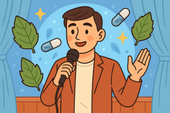
Supplements to Stay Calm Before Public Speaking
Breathwork is one of the simplest yet most powerful tools for calming pre-performance stress 🌬️. By slowing and deepening your breathing, you lower cortisol, steady your heartbeat, and re-center your mind. Learn the science behind how controlled breathing activates your parasympathetic nervous system — helping you speak, perform, or focus with grounded confidence. 🌿
-
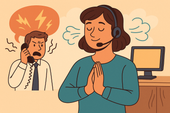
How to Handle Customer Service Stress Without Losing Your Cool 💬🧘♀️
Customer service can test even the calmest person’s patience. 😤 Learn how to handle difficult clients and daily pressure without losing your cool — through better mindset management, calming breathwork, and practical communication tools. Stay grounded, protect your energy, and transform stress into strength. 🌿
-
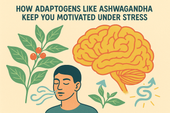
How Adaptogens Like Ashwagandha Keep You Motivated Under Stress
Feeling overwhelmed and unmotivated? 🌿 Discover how adaptogens like Ashwagandha can help you stay centered, focused, and energized under stress. Learn how supplements, breathwork, and therapy work together to restore your natural motivation and help you thrive — even during life’s toughest moments. 💪✨
-
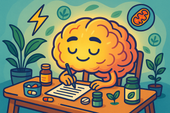
Supplements That Support Long-Term Productivity Without the Crash ⚡🌿
Cortisol — your body’s main stress hormone — can be both your best friend and worst enemy. ⚡ When balanced, it keeps you focused, energized, and ready to act. But when it stays high for too long, it leads to fatigue, anxiety, and emotional crashes. Learn how to regulate cortisol naturally through supplements, sleep, and stress management to maintain calm, steady productivity. 🌿
-
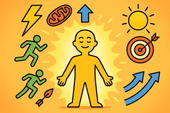
Why Energy Levels and Motivation Go Hand in Hand ⚡🧠
B-vitamins are the brain’s spark plugs 🔋. They turn food into fuel, support neurotransmitter production, and keep your mood, energy, and focus balanced. Learn how vitamins like B6, B9, and B12 work together to power the nervous system, reduce fatigue, and keep motivation high. 🌿
-
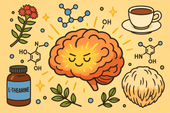
The Science of Motivation: Can Nootropics Help You Stay Focused? 🧠⚡
Nootropics are nature’s tools for sharper thinking and sustainable focus 🧠🌿. From Rhodiola and Lion’s Mane to L-theanine and Bacopa, these brain-boosting compounds enhance motivation, memory, and stress resilience. Learn the science behind how nootropics work — and how to use them safely for peak mental performance and clarity. ⚡
-
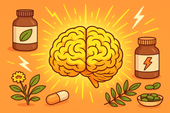
How Natural Supplements Can Boost Your Daily Drive
Cortisol is your body’s main stress hormone — powerful, necessary, but often misunderstood. ⚡ When balanced, it keeps you alert and energized; when chronically elevated, it drains mood, motivation, and focus. Learn how to regulate cortisol naturally through nutrition, supplements, and calming lifestyle habits for steady energy and emotional balance. 🌿
-
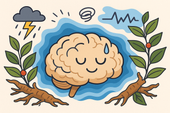
Ashwagandha for Stress and Low Mood
Breathwork is more than a relaxation tool — it’s a way to rewire your nervous system. 🌬️ Through intentional breathing, you can reduce stress hormones, improve focus, and calm emotional turbulence. This guide explores the science of breathwork and its powerful effects on mental clarity, resilience, and emotional regulation. 🌿
-
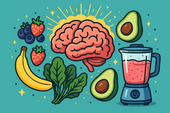
Mood-Boosting Smoothie Recipes
Your blood sugar affects far more than energy — it influences mood, focus, and emotional stability too 🍎. Learn how maintaining balanced glucose levels supports brain health, reduces anxiety, and prevents emotional crashes. Discover the foods and habits that keep your mind calm and your energy steady throughout the day. 🌿
-
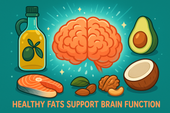
How Healthy Fats Support Brain Function
Your brain thrives on healthy fats 🧠💧. From omega-3s to MCTs, the right fats enhance focus, memory, and mood while protecting against inflammation and aging. This article explores how good fats — like those from olive oil, salmon, avocado, and nuts — build sharper thinking, emotional balance, and lasting brain vitality. 🌿
-
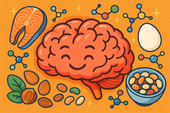
The Role of Protein in Mental Clarity
Protein isn’t just for muscles — it’s for your mind. 🧠 This guide explores how amino acids from high-quality protein fuel neurotransmitters, stabilize mood, and sharpen focus. Learn how balanced protein intake supports dopamine, serotonin, and energy regulation to boost mental clarity and emotional stability naturally. 🍳🌿
-
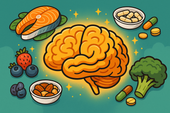
Nutrients That Support Emotional Stability
Your emotions are built from nutrients as much as from thoughts 🌿. This science-backed guide reveals the vitamins, minerals, and healthy fats that stabilize mood and reduce stress — from B-vitamins and magnesium to omega-3s and probiotics. Learn how balanced nutrition supports neurotransmitters, strengthens resilience, and promotes lasting calm and clarity 🧠✨.
-
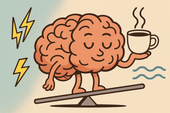
How Caffeine Affects Your Mood ☕
Your morning coffee might lift your spirits — but what’s really happening inside your brain? ☕ This in-depth guide explores how caffeine affects mood, motivation, dopamine, and stress. Learn how to enjoy caffeine mindfully without triggering anxiety, burnout, or emotional crashes. Discover the science behind your energy highs and lows — and how to find calm, sustainable focus. 🌿
-
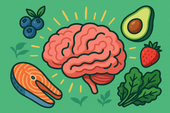
The Best Anti-Inflammatory Diet for Mental Health
Inflammation doesn’t just affect your body — it impacts your mood, focus, and emotional resilience too 🌿. This comprehensive guide reveals how an anti-inflammatory diet can support mental health by reducing neuroinflammation, balancing gut bacteria, and stabilizing blood sugar. Learn which foods to eat (and which to avoid) to protect your brain, boost serotonin, and promote lasting calm. 🧠✨
-
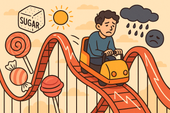
Why Sugar Spikes Can Worsen Depression
Sugar highs can make you feel good for a moment — but what comes next can fuel emotional crashes and deepen depression 🍭. This article explains how blood sugar spikes disrupt brain chemistry, increase inflammation, and destabilize serotonin. Learn how food, supplements, breathwork, and therapy can help you break the sugar–mood cycle and restore lasting emotional balance 🌿.
-
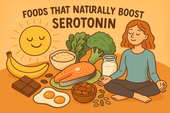
Foods That Naturally Boost Serotonin
Serotonin isn’t just a brain chemical — it’s your body’s built-in mood stabilizer 🌞. This in-depth guide explores how natural foods like salmon, eggs, bananas, and dark chocolate can elevate serotonin levels, while gut health, key nutrients, supplements, breathwork, and therapy create the perfect synergy for calm and emotional balance. Learn how to support your mind through diet, lifestyle, and mindset — naturally. 🌿
-
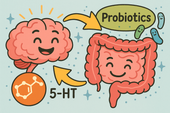
Probiotics for Mood Balance
-
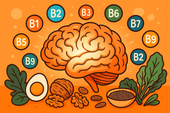
B-Vitamins and Their Role in Mental Health
Methylation is one of your body’s most important biochemical processes — influencing mood, energy, and focus. Powered by B-vitamins like B6, B9, and B12, it helps your brain create serotonin, detox efficiently, and maintain emotional balance. 🌿
-
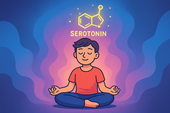
5-HTP for Serotonin Support
Calm isn’t just an emotion — it’s a physiological state where your body and mind finally sync in peace. By slowing your breath, softening your thoughts, and creating safety within, you restore the deep relaxation your nervous system craves. 🌿
-
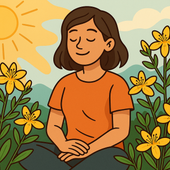
St. John’s Wort for Mild Depression
Antidepressants can be life-changing for many — but understanding how they work and what natural options like St. John’s Wort can complement them is key. Learn how both approaches affect brain chemistry, mood balance, and long-term emotional wellness. 🌿
-
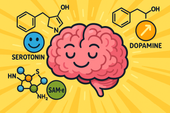
SAM-e: A Natural Mood Booster
Emotional regulation is the art of staying calm and grounded, even when life feels chaotic. By balancing your brain, body, and breath, you can respond with clarity instead of reacting from stress — building real emotional resilience and inner peace. 🌿
-

Rhodiola Rosea for Emotional Resilience
Neuroplasticity is your brain’s ability to grow, adapt, and heal — even after stress or trauma. Every thought, emotion, and habit reshapes your neural pathways, helping you build stronger emotional resilience, sharper focus, and lasting mental balance. 🌿
-
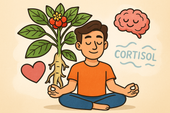
Ashwagandha for Stress and Low Mood
Adaptogens are nature’s stress balancers — powerful herbs like ashwagandha, rhodiola, and reishi that help your body adapt to tension, fatigue, and change. By regulating cortisol and supporting your nervous system, they build calm focus and emotional resilience from the inside out. 🌙
-
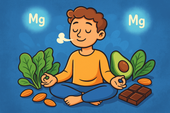
Magnesium’s Role in Emotional Regulation
Neuroscience helps us understand why we feel, think, and react the way we do. From brain chemistry and neural circuits to stress responses and emotional learning, the science of the brain reveals how our minds can heal, grow, and find balance. 🌿
-
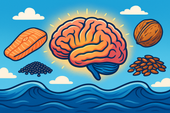
Omega-3 Fatty Acids and Emotional Well-Being
Nutrients aren’t just fuel — they’re communication signals that tell your brain and body how to function. From magnesium and vitamin D to omega-3s and B vitamins, the right mix of nutrients helps calm your mind, balance hormones, and support emotional and physical well-being. 🌙
-
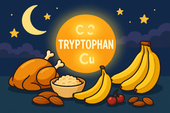
The Role of Tryptophan in Sleep Health
Mental health isn’t just the absence of illness — it’s the foundation of calm, focus, and emotional resilience. From managing stress and anxiety to nurturing self-compassion, understanding your mental well-being is the first step toward a balanced, more peaceful life. 🌿
-

Nutrients That Promote Nighttime Relaxation
Potassium does more than balance fluids — it also helps your body and mind relax at night. By calming nerves, reducing muscle tension, and supporting steady heart rhythm, potassium-rich foods like bananas, sweet potatoes, and coconut water can promote deeper, more restful sleep. 🌙
-
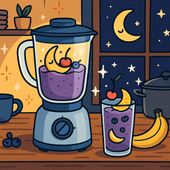
Sleep-Friendly Smoothie Recipes
Melatonin is your body’s natural sleep signal — a hormone that tells your brain when it’s time to rest. Learn how melatonin works, which foods and habits boost its production, and how to use it wisely for deeper, more restorative sleep without dependence. 💤
-
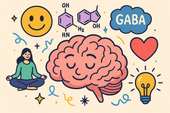
How Brain Chemistry Influences Mood
Your brain is a symphony of neurotransmitters — serotonin, dopamine, GABA, and more — working together to shape how you think and feel. When they’re balanced, you experience calm focus and emotional stability. When they’re not, mood swings and fatigue can follow. Learn how to naturally support these vital messengers for better mood and mental clarity. 🌿
-
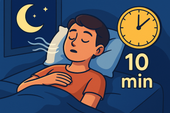
How to Fall Asleep in Under 10 Minutes
The military knows a few secrets about falling asleep fast — and they work even in chaos. This article explores the science behind rapid relaxation, including the famous “Military Sleep Method,” which teaches your body to shut down stress and rest on command. Learn how discipline, breath, and focus can help anyone fall asleep in minutes. 🌙
-
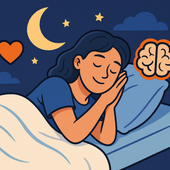
Why Emotional Resilience Improves Sleep
Emotional resilience isn’t just about mental strength—it’s also a key ingredient for better sleep. When your emotions are balanced, your body releases fewer stress hormones, your mind quiets faster, and your sleep becomes deeper and more restorative. Learn how to cultivate calm through mindset, breathwork, and daily habits. 🌙
-
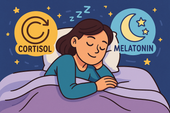
The Connection Between Stress Hormones and Sleep
Chronic stress can quietly reshape your body’s chemistry, raising cortisol, disrupting sleep, and draining your energy. This guide explores how long-term stress affects your nervous system, hormones, and rest—and how to restore calm through breathwork, nutrition, and daily recovery rituals. 🌿
-
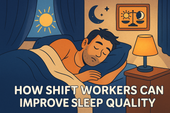
How Shift Workers Can Improve Sleep Quality
For shift workers, caffeine can be both a lifeline and a sleep disruptor. Learn how to use it strategically—boosting alertness during work hours without sabotaging rest. This guide explores timing, dosage, and smarter natural alternatives to keep your energy steady and your sleep restorative. 🌙
-
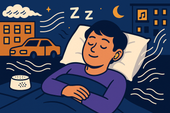
How to Sleep Better in a Noisy Environment
Living in a noisy area doesn’t mean sacrificing your rest. Learn practical and natural strategies to sleep better in loud environments—from using sound masking and breathwork to creating calming rituals that help your brain tune out the chaos. Find inner silence even when the world outside won’t quiet down. 🌙
-
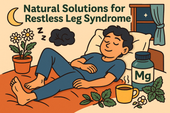
Natural Solutions for Restless Leg Syndrome (RLS)
Struggling to sleep deeply and wake refreshed? This soothing guide explores how the body restores itself during quality sleep—and how to support it naturally. Learn about the science of rest, the role of nutrients, and the rituals that promote deep, uninterrupted slumber. 🌙
-
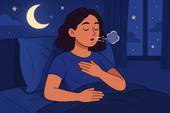
How to Overcome Middle-of-the-Night Anxiety
Middle-of-the-night anxiety can make even the calmest mind spiral into worry. This guide reveals practical, evidence-based techniques to help you stop the 3 A.M. overthinking loop—from breathwork and journaling to herbal supplements and therapy-based tools. Learn to retrain your nervous system and find peace when the world is asleep. 🌙
-
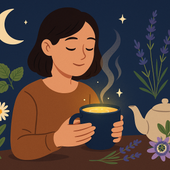
The Perfect Evening Herbal Blend
Discover the calming power of nature in your teacup. The perfect evening herbal blend combines chamomile, lemon balm, lavender, and adaptogens like ashwagandha to relax your body and quiet your mind before bed. Learn how to craft and customize a soothing, sleep-enhancing tea ritual that helps you unwind, restore, and wake up refreshed. 🌙
-
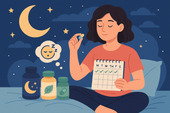
How to Cycle Sleep Supplements for Maximum Effectiveness
Wondering why your sleep supplements stop working after a while? This guide breaks down how to cycle sleep aids like melatonin, magnesium, and ashwagandha for consistent, long-term results. Learn when to rest your body, how to prevent tolerance, and what natural methods—like breathwork and therapy—enhance your sleep cycles. 🌙
-
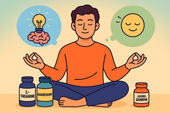
The Best Supplements for Both Relaxation and Focus
Calm your mind and sharpen your focus with the perfect blend of natural supplements. From L-theanine and magnesium to Rhodiola and Lion’s Mane, this science-based guide shows how to achieve relaxation and clarity at the same time. Discover stacks that support your nervous system, balance mood, and keep your mind laser-focused without the crash. 🌿
-
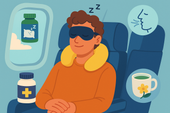
How to Sleep Better During Travel
Traveling can be thrilling—but sleepless nights can ruin even the best trips. From supplements like magnesium and melatonin to soothing breathwork and therapy-based techniques, this guide shows you how to sleep deeply on planes, in hotels, or across time zones. Learn to calm your body, reset your circadian rhythm, and build rest rituals that work anywhere in the world 🌙
-
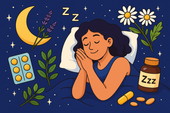
Improving Sleep in Menopause with Supplements
Menopause can make peaceful sleep feel impossible — but balance is within reach 🌿. This article explores how supplements like magnesium, ashwagandha, and black cohosh can ease night sweats, calm the mind, and restore your natural sleep rhythm during hormonal changes.
-
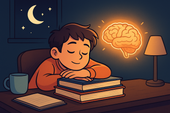
Sleep Support for Students During Exams
Exam stress can make it hard to rest — but sleep is what helps you perform your best 💤. This article explains how to improve sleep quality during exams through better study habits, natural supplements, breathwork, and therapy tools to calm the mind and sharpen focus.
-

Rest Strategies for Entrepreneurs
Entrepreneurs often burn out chasing their vision — but rest is the real fuel for success 🌙. This article explores science-backed recovery strategies for founders, including sleep, breathwork, therapy, and nutrition techniques that sharpen creativity and sustain performance.
-

How Sleep Affects Athletic Recovery
Sleep is where strength is built. 💤 This article explores how deep sleep drives muscle recovery, hormonal balance, and athletic performance — plus how supplements like magnesium, melatonin, and ashwagandha can enhance overnight repair and boost training results.
-

Better Sleep for People with Chronic Pain
Living with chronic pain makes sleep feel impossible — but it’s not. 🌙 This article explores how pain disrupts rest and how to rebuild your sleep through gentle breathwork, calming nutrition, therapy, and supplements that help your body relax and heal.
-

How to Sleep Better During Seasonal Changes
Seasonal shifts can throw your sleep off balance 🌦️. This article explains how light, temperature, and hormones change with the seasons — and how to restore your rhythm naturally through melatonin-supportive foods, breathwork, and therapy for emotional balance.
-

Foods That Naturally Boost Melatonin
Want to fall asleep faster without supplements? 🌙 This article explores how foods like tart cherries, pistachios, and kiwi naturally boost melatonin, the hormone that regulates sleep. Learn how to build an evening meal plan — plus simple rituals like breathwork and herbal tea — to improve rest and reset your circadian rhythm.
-

The Role of Herbal Tea in Relaxation
Herbal tea is more than comfort in a cup 🍵 — it’s nature’s gentle way to calm the mind and relax the body. This article explores how teas like chamomile, lavender, and lemon balm support stress relief, sleep quality, and emotional balance — plus how to pair them with magnesium, breathwork, and mindful rituals for deeper peace.
-

Lavender Extract and Its Calming Effects
Lavender extract is one of nature’s most soothing remedies 🌸. This article explores how lavender calms the nervous system, lowers cortisol, and improves sleep — plus how to combine it with magnesium, breathwork, and therapy for deep relaxation and emotional balance.

















































